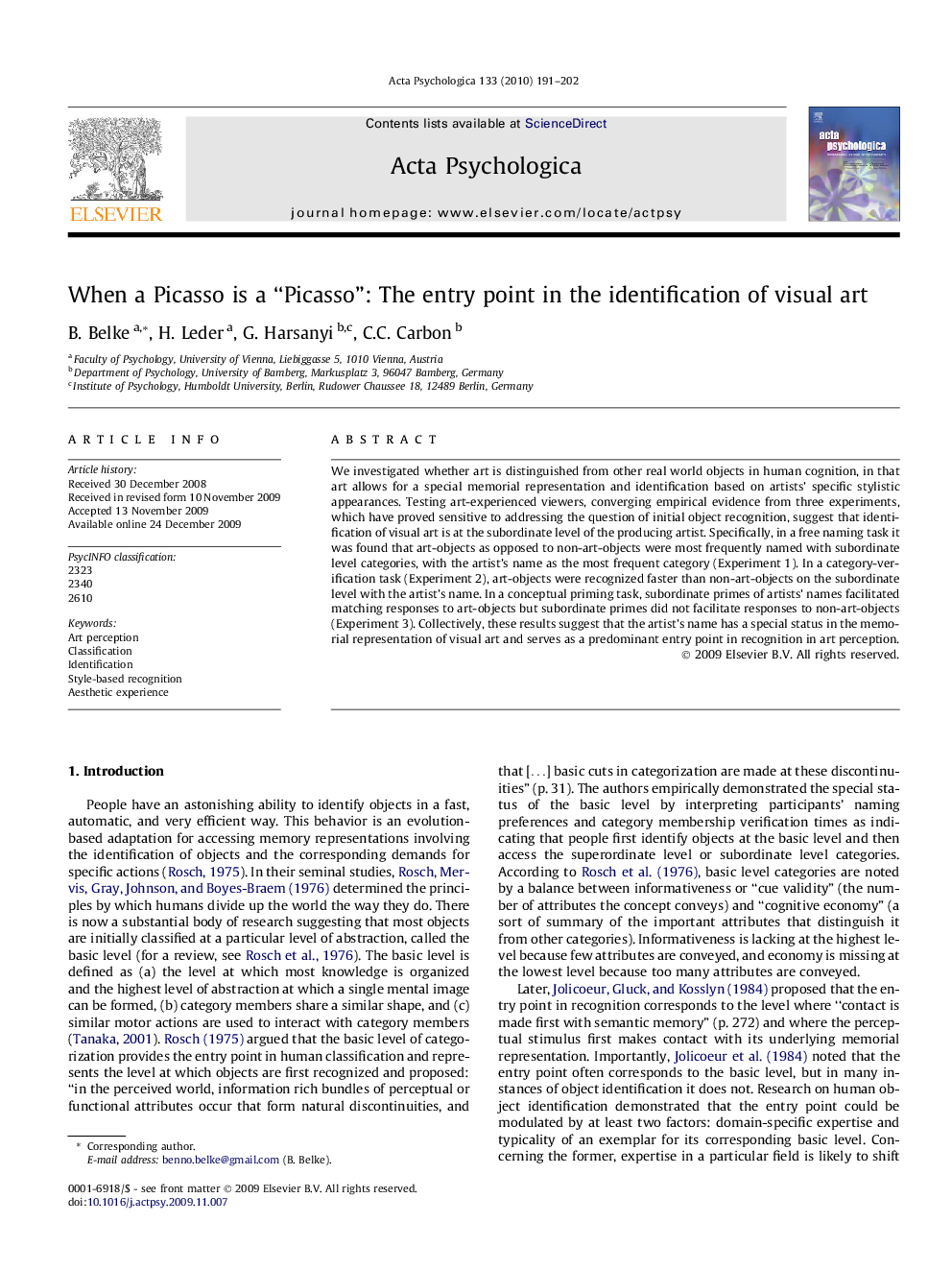| Article ID | Journal | Published Year | Pages | File Type |
|---|---|---|---|---|
| 920125 | Acta Psychologica | 2010 | 12 Pages |
We investigated whether art is distinguished from other real world objects in human cognition, in that art allows for a special memorial representation and identification based on artists’ specific stylistic appearances. Testing art-experienced viewers, converging empirical evidence from three experiments, which have proved sensitive to addressing the question of initial object recognition, suggest that identification of visual art is at the subordinate level of the producing artist. Specifically, in a free naming task it was found that art-objects as opposed to non-art-objects were most frequently named with subordinate level categories, with the artist’s name as the most frequent category (Experiment 1). In a category-verification task (Experiment 2), art-objects were recognized faster than non-art-objects on the subordinate level with the artist’s name. In a conceptual priming task, subordinate primes of artists’ names facilitated matching responses to art-objects but subordinate primes did not facilitate responses to non-art-objects (Experiment 3). Collectively, these results suggest that the artist’s name has a special status in the memorial representation of visual art and serves as a predominant entry point in recognition in art perception.
